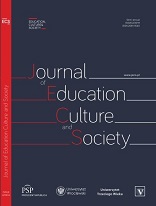Organizational Culture Type in Turkish Universities using OCAI: Perceptions of Students
Organizational Culture Type in Turkish Universities using OCAI: Perceptions of Students
Author(s): Aysun Caliskan, Chang ZhuSubject(s): Social Sciences, Business Economy / Management, Sociology, Sociology of Culture
Published by: Fundacja Pro Scientia Publica
Keywords: Organisational culture type;Turkish universities;OCAI;students’ perceptions;mixed method;hierarchy culture
Summary/Abstract: Aim. The aim of this research is to identify student perceptions of the current organizational culture type in four flagship Turkish public universities. Its further goal after this diagnosis was to help the researchers and policy makers to deeply understand the actual situations and make recommendations for organizational culture change and educational innovations. Methods. We applied a mixed-method approach to collect data. The quantitative method consisted of 964 applications of the instrument of OCAI to bachelor students. The qualitative method included 19 semi-structured interviews to follow up and verify the results from the survey to have a deeper insight into Turkish HEIs. Results. The variety of findings through survey and interviews revealed and validated that the dominant culture type of Turkish universities regarding students is hierarchy followed by market culture. It is probable that the national cultural structure of the Turkish society is a result of this finding. It appears that Turkey has a hierarchical workplace attributing control, order, authority, and smooth functioning. Conclusions. Based on student perceptions, this study can provide policy makers, academic leaders, academic staff and employees in administrative units with a broader knowledge of the current organizational culture type in universities in Turkey, and identify the strengths and weaknesses of organizational culture in universities and to improve the quality through making innovations.
Journal: The Journal of Education, Culture, and Society
- Issue Year: 10/2019
- Issue No: 2
- Page Range: 270-292
- Page Count: 23
- Language: English

